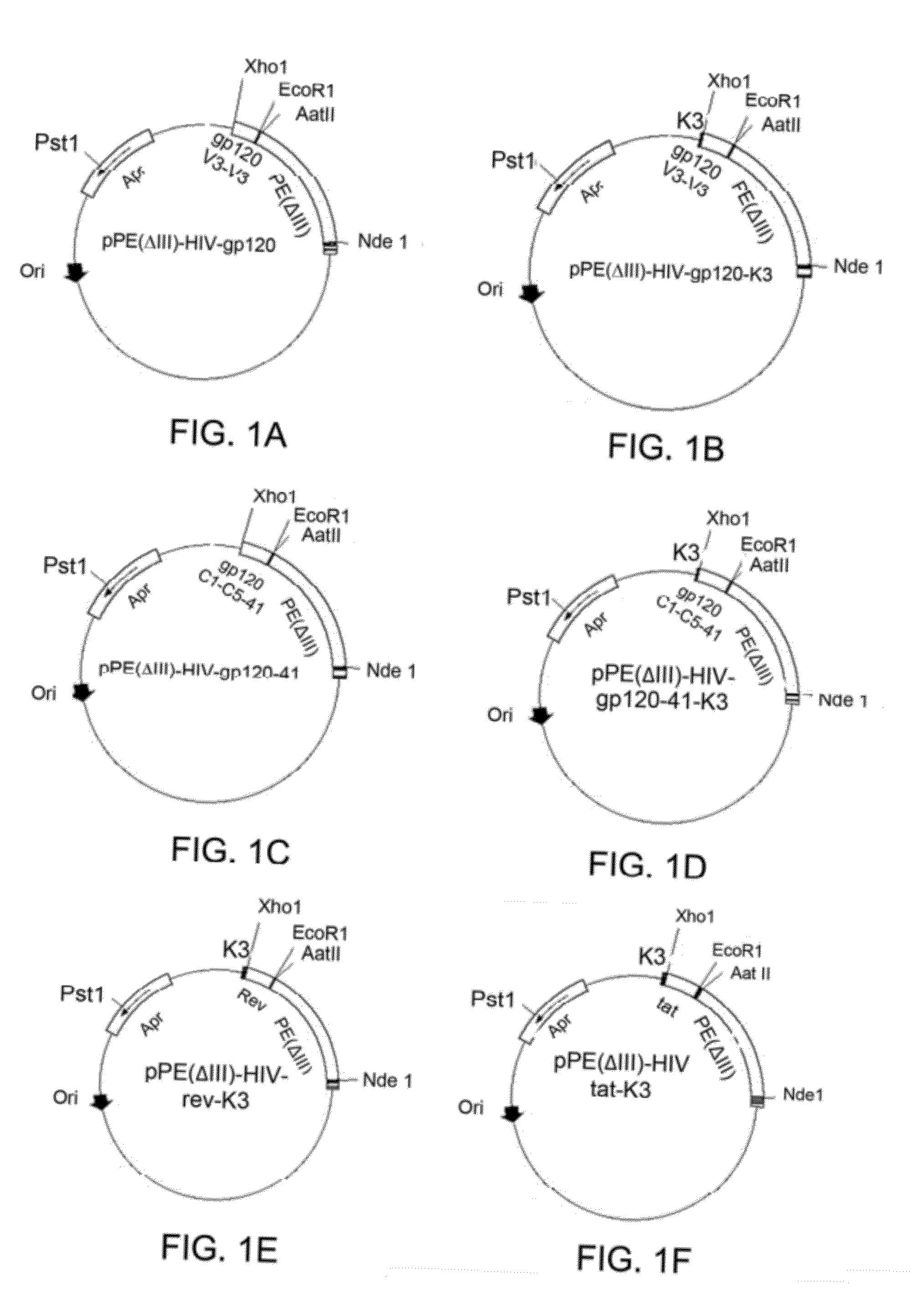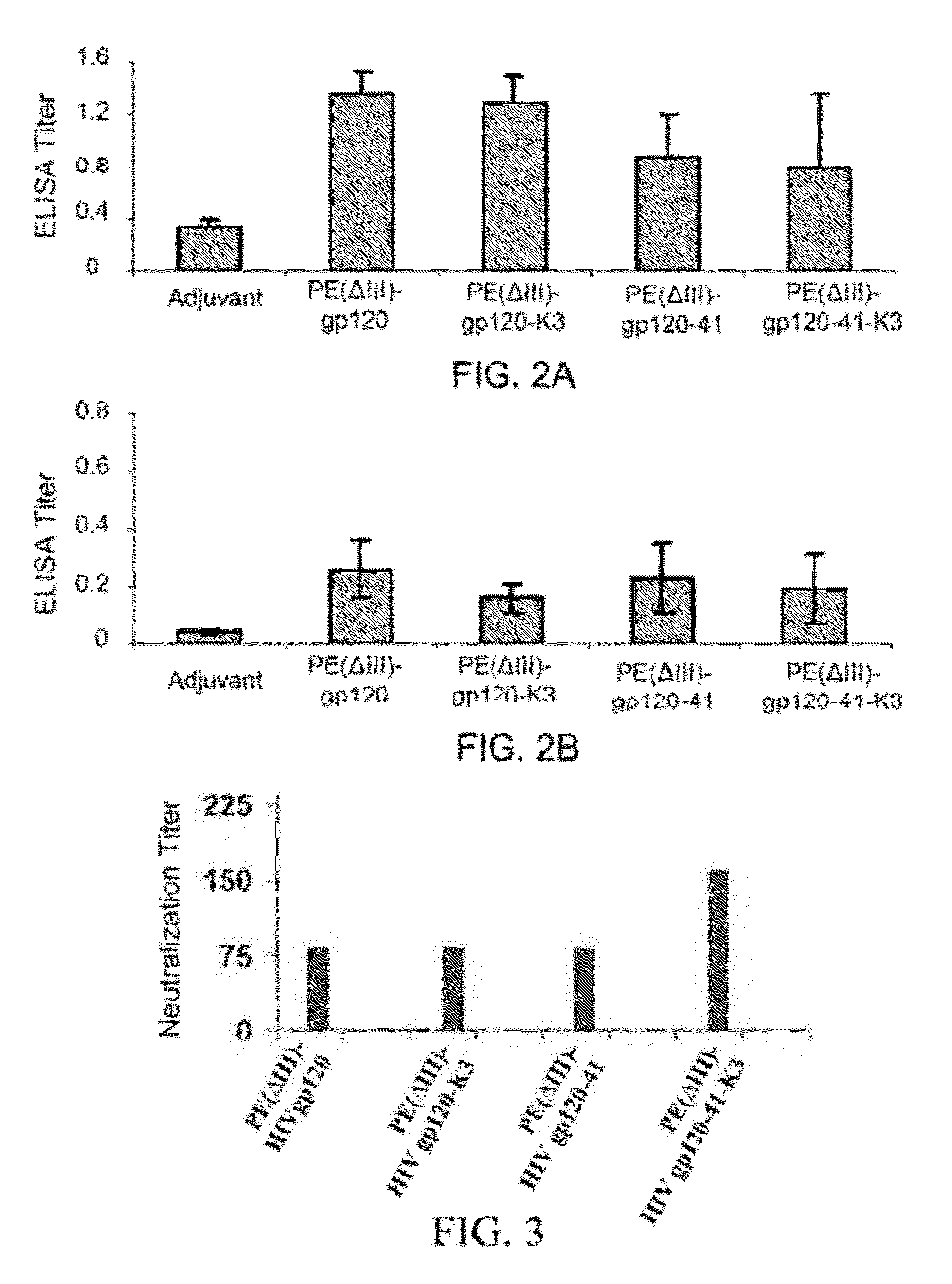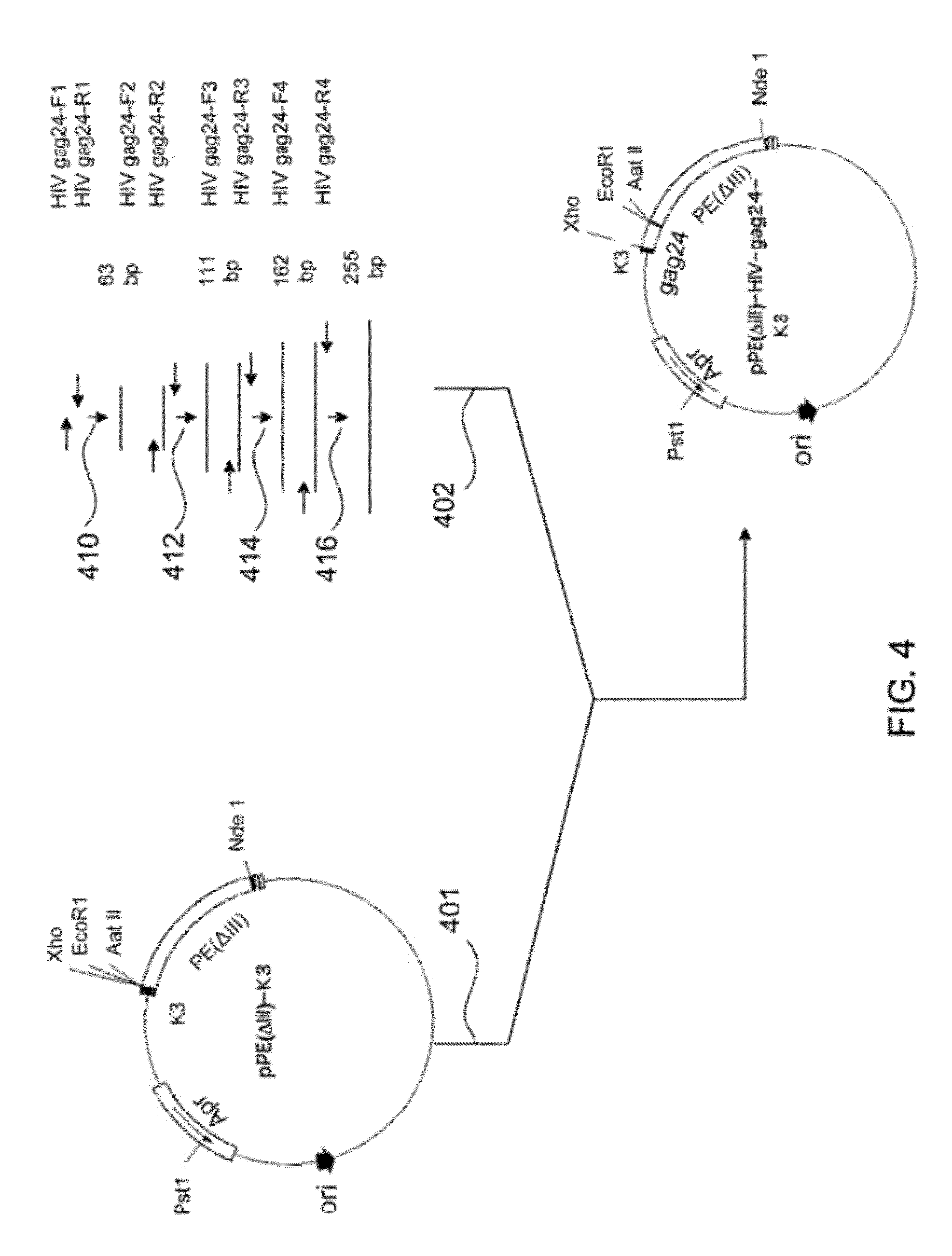Chimeric HIV fusion proteins as vaccines
a technology of fusion proteins and hiv, which is applied in the field of vaccines, can solve the problems of limited use, difficult for vaccinologists to construct live-attenuated viruses, and often limited neutralization by anti-v3 antibodies, and achieves limited usefulness as a targ
- Summary
- Abstract
- Description
- Claims
- Application Information
AI Technical Summary
Benefits of technology
Problems solved by technology
Method used
Image
Examples
example 1
Selection of Truncated Segments from HIV Env Proteins, gp120 and gp41
[0046]The amino acid sequences of HIV gp120 and gp41 were retrieved from the National Center of Biotechnology Information (NCBI, USA) database and entered into software for evaluation of antigenic determinant (epitopes) of the target proteins, and candidate segments for synthesis displayed on an evaluation plot. Antigenic determinant regions of the target protein were chosen for synthesis by a reverse genetic engineering technique. Several peptide segments were selected as target peptides based on the results of the evaluation software. The software DNA strider v1.0 was used to analyze whether the nucleotide sequences of the target peptides contained restriction enzyme sites. If present in the DNA sequence in disadvantageous places, changes were made within the appropriate codons without altering the amino acid sequence. The software checked the newly created sequence, and designed restriction sites at both termini...
example 2
Construction of Chimeric Target Polypeptides gp120 V3-V3 and gp120 C1-C5-gp41
[0047]Two target peptides gp 120 V3-V3 and gp120 C1-C5-gp41 were constructed using the selected peptide segments as follows: Three truncated peptide segments having the amino acid sequences of SEQ ID NO. 1 (from gp120 C1 domain), SEQ ID NO. 2 (from gp120 C5 domain) and SEQ ID NO. 5 (from gp41 region associated with gp120), respectively, were ligated to form a chimeric target peptide gp120 C1-C5-gp41 (referred to as gp120-41). Two truncated segments having amino acid sequences of SEQ ID NOs: 3 and 4 (both from gp 120 V3 domains), respectively, were fused to form polypeptide gp 120 V3-V3 (referred to as gp120). One or more residues might be inserted in-between to link two peptide segments. The number of residues inserted in-between was about 1 to 15 amino acids, which might be selected from amino acid residues that would not alter the secondary structure of proteins, such as glycine, alanine, valine, and leuc...
example 3
Synthesis of DNA Fragments Encoding Chimeric Target Polypeptides gp120 V3-V3 and gp120 C1-C5-gp41
[0053]The nucleotide sequences of the DNA fragments encoding chimeric target peptides gp 120 V3-V3 and gp120 C1-C5-gp41 were modified to increase translation efficiency without changing the amino acid sequences of the encoded proteins, using the method disclosed in Taiwan patent application No. 092126644, which is incorporated herein in its entirety by reference. The sequence modification allowed the encoded peptides or proteins to be efficiently expressed in E. coli pET plasmid expression system. Table 4 lists the modified sequences of the DNA fragments encoding the chimeric target peptides gp120 V3-V3 and gp120 C1-C5-gp41, in which non-italic, capital letters denote restriction enzyme linkers for EcoRI, NdelI and SalI cutting sites, and italic, capital letters denote a XhoI restriction enzyme site.
TABLE 4ChimerictargetSEQ IDpeptideNucleotide sequenceNogp120GAATTCCATATGGTCGACatcggttgcac...
PUM
| Property | Measurement | Unit |
|---|---|---|
| non-polar | aaaaa | aaaaa |
| biocompatible | aaaaa | aaaaa |
Abstract
Description
Claims
Application Information
 Login to View More
Login to View More - R&D
- Intellectual Property
- Life Sciences
- Materials
- Tech Scout
- Unparalleled Data Quality
- Higher Quality Content
- 60% Fewer Hallucinations
Browse by: Latest US Patents, China's latest patents, Technical Efficacy Thesaurus, Application Domain, Technology Topic, Popular Technical Reports.
© 2025 PatSnap. All rights reserved.Legal|Privacy policy|Modern Slavery Act Transparency Statement|Sitemap|About US| Contact US: help@patsnap.com



